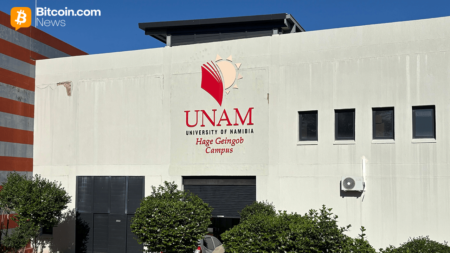Bitcoin Miners Face Challenges Amid Transaction Drought: A Deep Dive
The cryptocurrency landscape, particularly Bitcoin mining, is experiencing a notable downturn. As we approach the end of 2023, Bitcoin miners are confronted with unprecedented challenges, including a substantial decrease in revenue and reduced activity on the blockchain. These factors raise legitimate concerns regarding the long-term security and stability of the Bitcoin network, making it essential to analyze the current situation in-depth.
The Transaction Drought: A Significant Drop in Activity
One of the primary issues affecting Bitcoin miners is the significant drop in daily transactions. Currently, the number of Bitcoin transactions has plummeted to levels not seen since late 2023. This drastic reduction has led to a noticeable decline in network usage, creating an unusually empty mempool— the queue of unconfirmed transactions waiting to be added to the blockchain. As transaction volumes wane, the implications for miners are stark, leading to reduced opportunities for revenue generation through transaction fees.
Revenue Challenges for Miners
The decline in daily transactions has had a direct impact on transaction fees, which have historically been a significant source of income for Bitcoin miners. With fewer transactions occurring, fees have dropped sharply, constricting miners’ revenue streams. This reduction represents a fundamental shift in the economics of Bitcoin mining. Miners, who rely heavily on transaction fees alongside block rewards, now find themselves with diminishing returns. As profitability declines, this could force some miners to reconsider their operations, potentially leading to a reduction in the overall hash rate of the network, which is critical for maintaining Bitcoin’s security.
Implications for Blockchain Security
The interconnected issues of declining revenue and transaction activity could pose risks to the overall security of the Bitcoin blockchain. Fewer miners in operation could result in a lower collective hash rate, making the network more vulnerable to attacks. The security model of Bitcoin relies on a robust network of miners working to validate transactions and secure the blockchain. As economic incentives wane, significant scaling back of mining operations could undermine this model, raising questions about confidence in the long-term viability of the network.
The Future of Bitcoin Network Activity
While the current transaction drought raises concerns, it is important to also consider the potential catalysts for renewed activity on the Bitcoin network. Factors such as increased adoption, institutional investment, or the onset of new market trends could stimulate transaction volumes and enhance the overall ecosystem. Furthermore, technological advancements such as improvements in blockchain scalability may also offer avenues for more efficient transactions and, in turn, foster a resurgence in miner activity.
Market Adaptation and Resilience
The cryptocurrency market has a history of adaptation and resilience. Despite the challenges Bitcoin miners currently face, the community has often found ways to recalibrate and recover. Innovations such as Layer 2 solutions, like the Lightning Network, aim to facilitate faster transactions with lower fees, potentially driving user engagement and increasing overall network activity. As the market adjusts to current conditions, the ingenuity of teams of developers and miners alike will play a crucial role in reinvigorating Bitcoin’s growth trajectories.
Conclusion: Navigating Uncertain Waters
In conclusion, Bitcoin miners are currently navigating through a perfect storm characterized by falling revenues and declining network activity. This transaction drought not only affects revenue but raises serious questions about the security and sustainability of the Bitcoin blockchain. However, the cryptocurrency space is no stranger to fluctuations and challenges, as adaptive measures may pave the way for recovery. Continuous innovation and an unwavering commitment from the Bitcoin community will be imperative in overcoming these hurdles, ensuring the long-term health and security of the network. As we move forward, all eyes will be on Bitcoin miners to see how they respond to these challenges and potential opportunities that lie ahead.
















